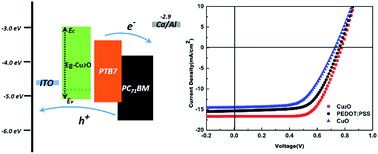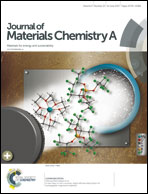Single phase, high hole mobility Cu2O films as an efficient and robust hole transporting layer for organic solar cells†
Abstract
Inorganic hole transport materials (HTMs) are being extensively studied as they are promising for efficient and stable organic solar cells (OSCs) and organic–inorganic hybrid perovskite solar cells. High mobility, earth-abundant, environmentally stable and nontoxic HTMs are the focus of research. This work demonstrates that highly transparent, high mobility and phase pure Cu2O nano-crystal films are promising HTMs for efficient OSC applications. The Cu2O films are synthesized by reactive magnetron sputtering at room temperature. The highest power conversion efficiency of OSCs based on the classical PTB7:PC71BM active layer reaches 8.61% with the Cu2O HTM, which is 15% higher than that of the OSCs with the standard PEDOT:PSS HTM layer. Our study shows that the device based on the Cu2O HTM exhibited better energy level alignment, reduced series resistance and therefore improved charge extraction compared with those based on CuO and PEDOT:PSS HTM layers. The improved photovoltaic performance suggests that Cu2O is a promising HTM for future low temperature roll to roll organic solar cell and even perovskite solar cell fabrication.



 Please wait while we load your content...
Please wait while we load your content...